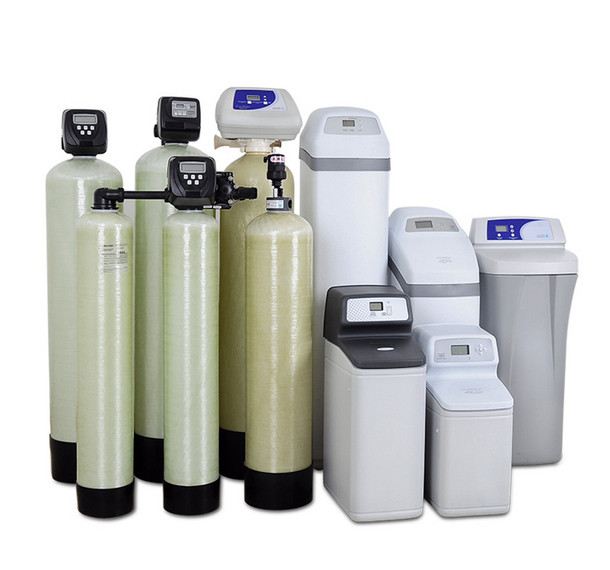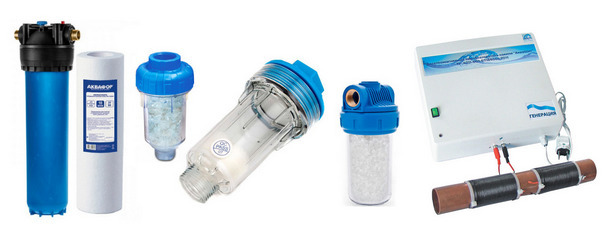Content
- Polypropylene pipes
- Advantages of Polypropylene
- disadvantages
- Reinforced polypropylene pipes
- Metal plastic
- Advantages of metal-plastic pipelines
- The disadvantages of metal
Metal pipes for water supply and heating are in less demand among consumers, giving way to modern counterparts. The choice in favor of metal-plastic and polypropylene communications is not just a fad. Pipes made of these materials do in some respects surpass traditional cast iron and steel structures. It is difficult to say for sure which pipes are better - metal-plastic or propylene. The preference for one of these materials depends on the specific situation. In order not to make a mistake and make the right choice, you need to know their characteristic features and differences.
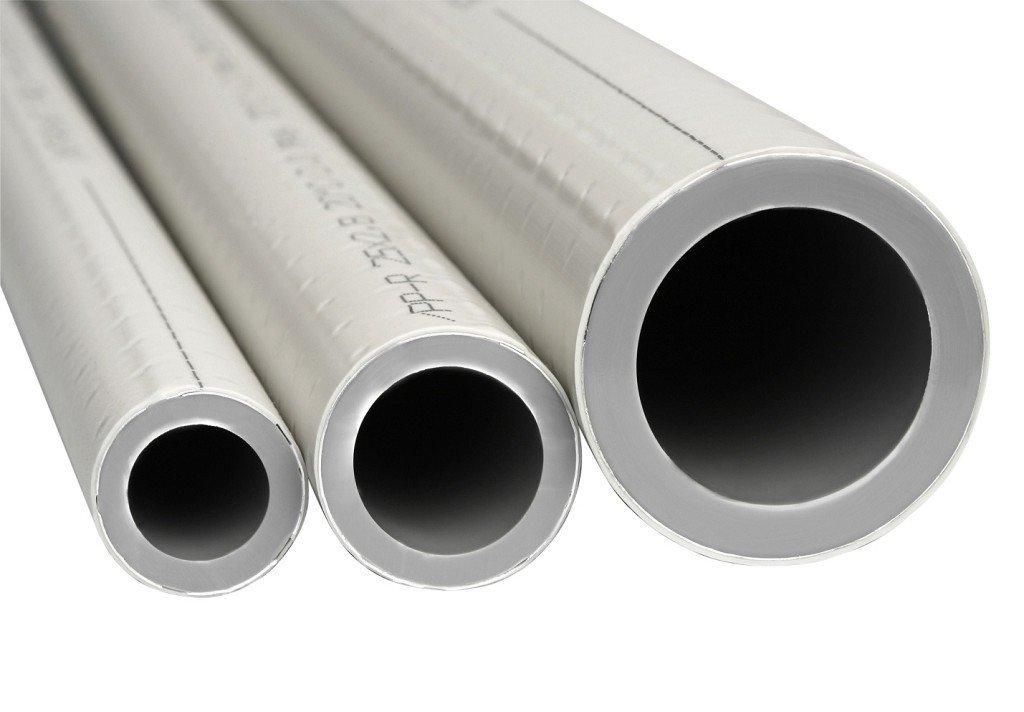
Polypropylene pipes

Raw materials for manufacturing polypropylene pipes and fittings is a random copolymer of polypropylene of the third type. This modified material has many positive properties, which allows the use of such pipes in hot and cold water supply. In addition, due to its chemical resistance, polypropylene is used in the construction of process pipelines used to transport substances with a wide variety of properties.
It is immediately worth noting that polypropylene belongs to the group of materials called thermoplastics. This means that it softens and melts under the influence of high temperatures. Its melting point is 170 degrees, and at 140 degrees Celsius it loses its hardness.

The nominal temperature that high-quality polypropylene products can withstand varies within 75 ° C with short-term jumps up to + 95 °. For this reason, polypropylene products are not recommended for use in heating systems. An exception - reinforced polypropylene pipeswhich belong to a separate category.
USEFUL INFORMATION:How to replace the faucet box in the event of a mixer malfunction
Polypropylene products do not bend, so all turns of the pipeline are carried out using special connections - fittings. The fixing of the system elements is carried out using a special welding machine. It heats the material of parts that reliably stick together.

Advantages of Polypropylene
- tightness of connections - thanks to this, such pipes can be used in hidden heating and water supply systems, closing them into floors or walls, without fear that they will leak;
- corrosion resistance and long service life - 50 years;
- high mechanical strength;
- constant inner diameter throughout the entire service life - the smoothness of the inner walls prevents the appearance of scale and various deposits;
- good sound insulation - no sound of water in the pipes;
- quite simple and quick installation - the process of welding joints takes the minimum time;
- the lack of interaction of the material with chemically active substances - does not affect the composition of water without changing its taste, smell and color;
- environmental friendliness - polypropylene is absolutely harmless to humans, and its processing does not harm the environment;
- high ductility and ability to expand - the pipes tolerate freezing and after thawing return to their original shape and size without deforming or bursting;
- relatively low cost.

disadvantages
- the inability to use conventional unreinforced polypropylene products in systems with constant high temperature;
- big thermal expansion - it is necessary to take this into account when installing a hot water supply system and heating system. You can not hide the pipes under the finish close, otherwise when they expand, it will be damaged;
- the need to use a large number of various fittings for wiring, the cost of which in total can be quite high;
- the inability to connect pipes without a special soldering iron and handling skills.
USEFUL INFORMATION:What wallpaper will make the bedroom beautiful and cozy

Reinforced polypropylene pipes
If we are talking about reinforced polypropylene pipes, then they are characterized by improved technical properties. Such products have an additional layer of aluminum foil or fiberglass.
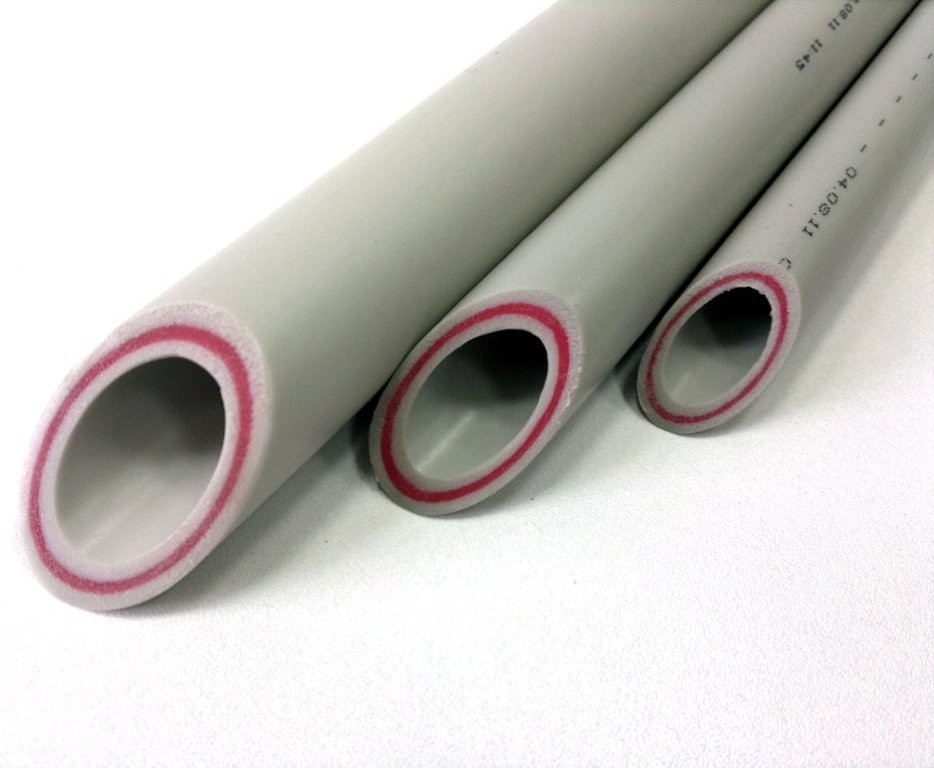
The operating temperature regime provides for a liquid temperature of up to + 95 ° C with a short-term increase to + 120 ° C. In addition, such products withstand high pressure. Due to these characteristics, reinforced pipe products can be used in the heating system in the apartment.
Metal plastic

Metal-plastic pipe products are multilayer reinforced structures, the frame of which is an aluminum pipe with a thickness of 0.2 to 2 mm. Outside and inside the product has a shell made of PE -X polymer. Plastic layers are bonded to aluminum with an adhesive.

Due to the smoothness of the plastic surface, they do not clog like steel and cast iron. The aluminum layer prevents the penetration of oxygen into the pipes, increasing their service life, and significantly reduces the thermal expansion of the plastic.
The operating temperature of metal-plastic products is + 95 ° C, maximum - + 130 ° C. The pressure that they can withstand at 95 ° C is 10 atmospheres, at 25 ° C it is 25 atmospheres.
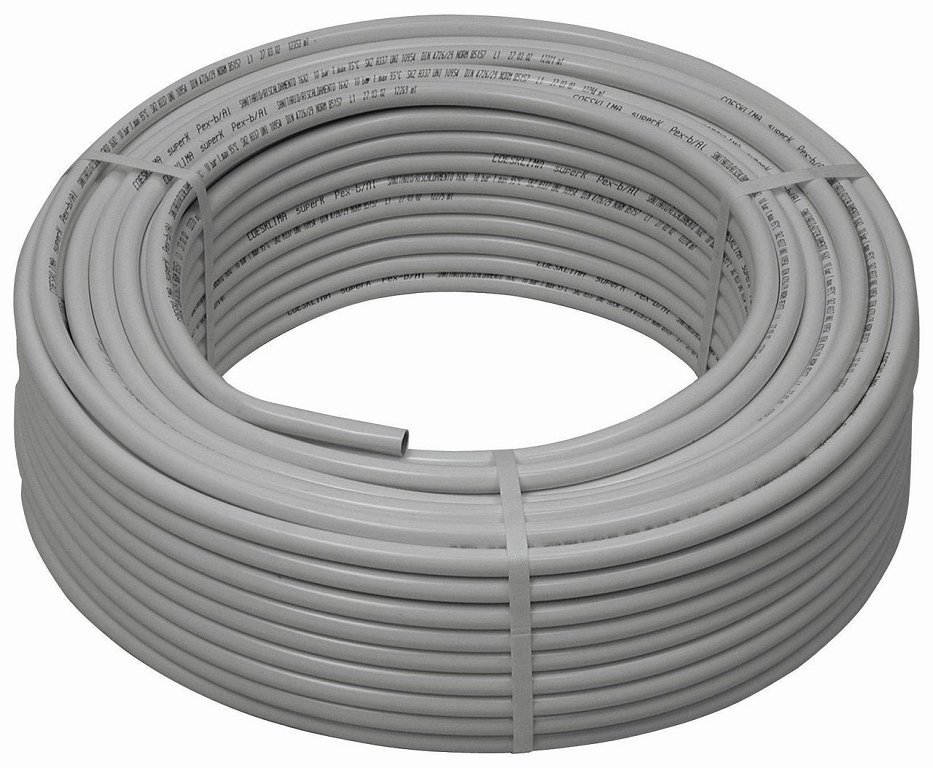
Pipes made of metal-plastic can be mounted quite easily and replaced independently. They are connected with threaded compression fittings-adapters. However, the reliability of such compounds may be insufficient, especially with an unprofessional approach. It is better for these purposes to invite the master. A press fitting is considered a much more reliable method, but it requires a special tool - press tongs.
USEFUL INFORMATION:Metal sink siphon: chrome, bronze, stainless steel
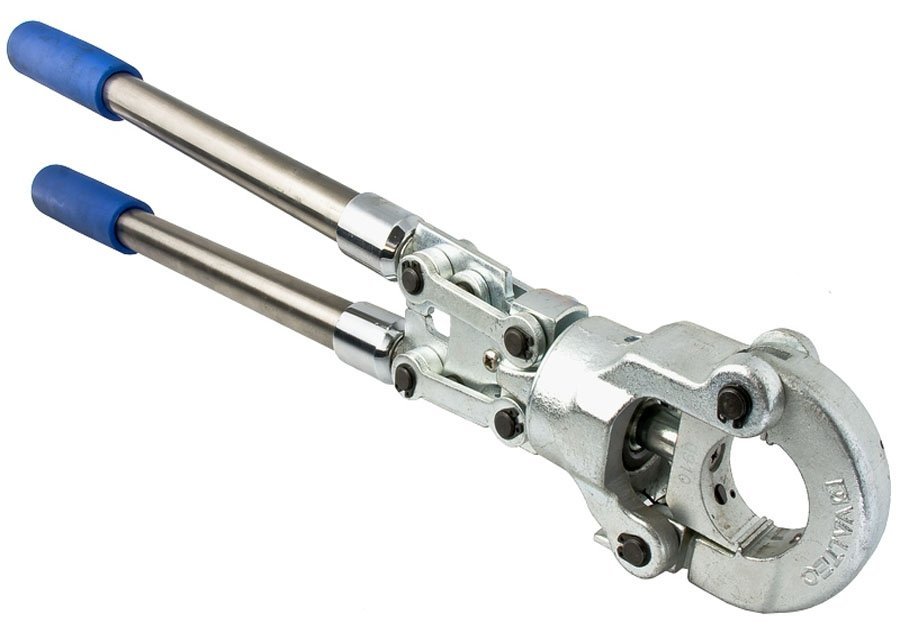
Advantages of metal-plastic pipelines
- light weight;
- flexibility - allows you to do without a large number of connections and does not require accurate measurements of linear dimensions;
- quick and easy installation;
- resistance to high temperature effects;
- low thermal expansion;
- ability to withstand high pressure;
- the impossibility of corrosion;
- high throughput and lack of deposits on the walls - as well as polypropylene pipes;
- sufficiently low thermal conductivity;
- resistance to various substances.

Many advantages of polypropylene and metal-plastic pipe products are similar, therefore, their selection will be more influenced by their shortcomings.
The disadvantages of metal
- flammability;
- intolerance to direct sunlight;
- low resistance to mechanical stress and damage;
- the need for providing access to junction points to control possible leaks;
- tapered fittings
- poor tolerance of temperature extremes;
- higher than polypropylene, the risk of breakthrough at the junction.

Thus, a clear answer to the question of which pipes are better does not exist. The main thing to be guided by when choosing is the operating conditions of the water supply system.

EXPERT SITE
Tsugunov Anton Valerevich
Master Station Wagon
- Since 2003, I have been engaged in the repair and decoration of premises.
- Over 100 completed objects.
- I appreciate the quality, more than the quantity!
Personal page >>>
Friends!
I offer you the service "Friend Builder"
As this site develops, subscribers and visitors are turning to me more and more often asking for help with advice on various issues of repair and decoration.
Questions are sometimes asked very complex and interesting. You can’t write an article for each situation, so I decided to advise you individually.
Thanks to you, friends, a new direction of my favorite work has been born - share your experience and benefit everyone who is undergoing repairs!
Get a one-time consultation from me >>>
Order full apartment repair support >>>
